Optoma ThemeScene HD82 Review
Optoma ThemeScene HD82
Optoma's latest cinema projector has been a long time coming. Has it been worth the wait?
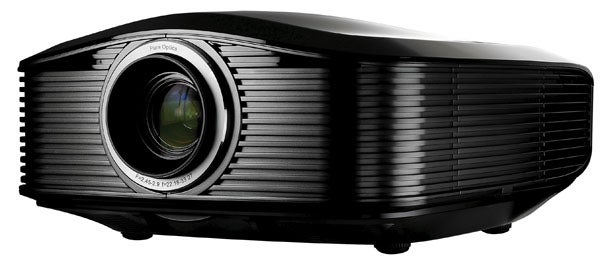
Verdict
Key Specifications
- Review Price: £2995.00
Aside from a couple of interesting little diversions in the shape of its ultra-cheap GameTime projectors, Optoma has been a bit quiet lately. Certainly we haven’t seen anything really significant on the quality home cinema front from them for what feels like an age. But that’s changing – in emphatic style – today, with the arrival in our blacked out test rooms of Optoma’s Themescene HD82.
This, as its name suggests, is the long-awaited follow-up to the eminently likeable HD80, reviewed towards the end of 2007. And a run-down of its specifications soon reveals that Optoma certainly hasn’t spent the time between the HD80 and HD82 sitting on its hands.
For starters, the HD82 has undergone a complete design revamp, with likeable results. Out go the cutesy but rather overcooked curves and white but flimsy finish of the HD80; in for the HD82 comes a gorgeous black finish, a much larger and immensely heavy chassis, and curves that feel like an organic extension of the projector’s innards rather than the doodling of some drunken artist. In short, where the HD80 looked and to some extent felt like a bit of a toy, the HD82 looks and feels like every inch the serious home cinema machine.
This impression merely grows once you start to explore why the bodywork has changed so much. For it turns out that nearly a third of the HD82’s depth is effectively a huge baffle, designed to reduce running noise. And this baffle effect works superbly well, making the HD82 run with only a fraction of the noise heard from its predecessor. In fact, it’s one of the quietest DLP projectors I’ve ever come across, particularly if you run it in low lamp mode.
Sticking with the issue of running noise, it also struck me that the customary noise made by the cooling fans was joined by only a little extra whine from the colour wheel that’s inevitably found inside any single-chip DLP projector. Optoma claims to have put considerable effort into introducing acoustic dampening into the HD82’s construction, using steel in places where it would previously have just used lighter but less absorbent aluminium. Its efforts appear to have paid off handsomely.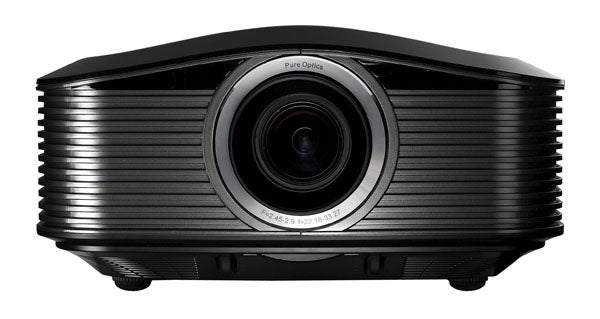
The colour wheel I just mentioned is a six segment affair, based around the RGBRGB configuration. Some rival projectors now use RGBCMY six-segment colour wheels, which can generally deliver brighter images. But experience suggests that these sorts of colour wheels also tend to generate considerably more evidence of DLP’s rainbow effect problem, where stripes of pure colour appear over bright parts of the image.
This situation seems entirely borne out by the HD82. During my testing period, the only time I noticed the rainbow effect from the RGBRGB wheel was if I flicked my eyes deliberately left and right while something extremely bright was being shown – such as white text credits on a black background. Frankly, under normal circumstances, anyone daft enough to deliberately flick their eyes left and right while watching a film deserves everything they get!
So far as I’m concerned, the HD82’s level of suppression of the rainbow effect is unprecedented on a £3k DLP projector. And, for me, this removal of an artefact, which really can distract you from what you’re watching, is a hundred times more important than any amount of extra brightness, especially if you’ve got the projector installed in a properly blacked-out room.
Shifting down a gear or two to more prosaic matters, the HD82 is really well connected for its level of the market. Two v1.3 HDMI ports lead the way, but they’re joined by an RS232 port for system control and integration; not one but two 12V trigger outputs for driving, say, a motorised screen and a motorised set of aspect ratio curtains; a VGA input that can also take in SCART feeds via a provided adaptor; a component video input; a DVI-D input; plus the still seemingly de rigueur but actually eminently avoidable S-Video and composite video inputs.
As you’d expect for £3k, the HD82’s DLP chipset is a 1,920 x 1,080 Full HD affair, able to produce a claimed ‘full on, full off’ contrast ratio of 20,000:1. What’s really enticing, though, is the HD82’s ANSI contrast ratio, which lies in the region of 600 and 700:1. This much more ‘real world’ contrast figure is actually very high for the home cinema market, leaving even the best LCD competitors trailing. Even the excellent Panasonic PT-AE3000 LCD model ‘only’ gets to around 450:1 on the ANSI contrast scale.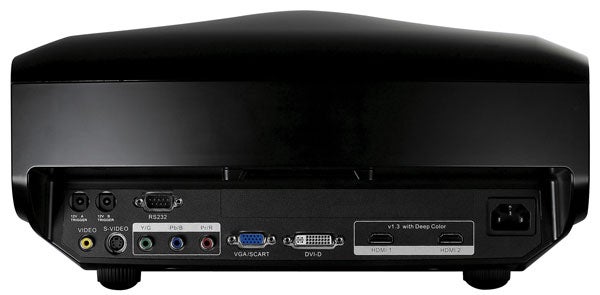
A trawl through the projector’s weighty instructions manual and reasonably elegant on-screen menus uncovers a couple more unexpected but welcome surprises. Particularly intriguing is the appearance of a frame interpolation system, dubbed ‘PureMotion’, which calculates and then inserts extra frames of image data to reduce the judder common to 1080p/24 Blu-ray viewing. The HD82’s system actually adds in one new frame for each single frame from the source, effectively turning 24p into 48Hz.
Feel free to correct me if I’m wrong, but I can’t currently think of another DLP projector at the HD82’s price point that carries a similarly fully-fledged frame interpolation system.
The HD82 also delivers a couple of other ‘PureEngine’ processing benefits: a detail booster and a colour booster. More details on all of this will follow once we get into the actual testing phase of this review.
Other features of note in the HD82’s menus include a variety of useful presets, including Cinema, Photo and Reference modes – the Reference mode being the one calibrated to get closest to the D65/2.2 gamma setting considered to be the industry standard for video settings. 
I personally find it interesting – and telling – that the HD82 has a Cinema setting that’s actually separate to the Reference setting. For it tells me that Optoma likely shares my view that contrary to what some reviewers seem to think, the D65 standard, however supposedly ‘in tune’ with the settings used in post-production on films, doesn’t always actually deliver the most satisfying picture quality in a home environment. Oooh, controversial…
Anyhow, other tweaks that can be employed to optimise picture quality for your particular viewing conditions include a black/white extension, RGB gain and bias adjustment, and a DynamicBlack system that adjusts the projector’s light output in response to the darkness or brightness of the image being shown at any given moment.
Attempting to position the HD82 in our test room unveiled more signs of improvement over previous Optoma DLP home cinema projectors. For starters, the lens delivers a decent 1.5x optical zoom, making the HD82 much easier to adapt to different room sizes. It’s also got a decent amount of vertical and horizontal image shifting via wheels mounted on the projector’s underside.
The only remaining niggle is that the HD82 is basically designed for ceiling mounting or use on a desktop. If you want to use it mounted on a shelf or projection stand above and behind your seating position, you’ll end up having to tilt the projector downwards and employing keystone correction to get rid of the resulting angled edges of your image – even though keystone correction effectively distorts the image.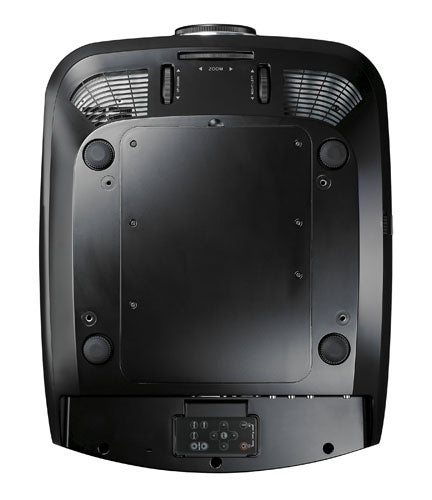
Settling down at last to see what the HD82 can do, it doesn’t take many minutes of use to realise that it’s really quite a special machine.
For starters, the DynamicBlack system mentioned earlier is revealed to be almost totally unnecessary thanks to the refinement and profundity of the HD82’s ‘native’ black level response. Basically, switching in a dynamic brightness element that introduces an element of instability to images and extra noise from the readjusting iris just isn’t worth bothering with given how small a return it gives in terms of extra black level depth.
Sitting side by side with the HD82’s wonderfully natural and cinematic black levels, meanwhile, are some superbly vivid colours. Animated fare like the stunning new Pinocchio Blu-ray transfer radiates off the screen with an intensity precious few non-DLP projectors can match.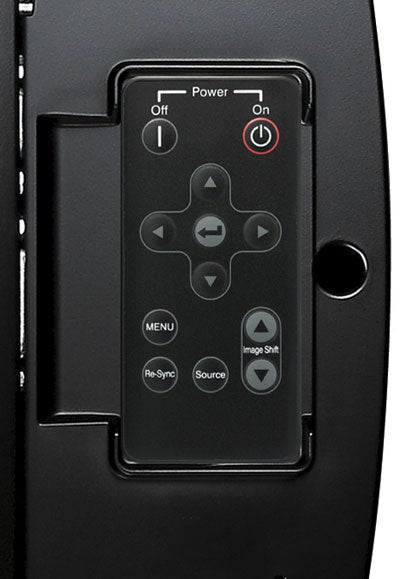
What’s more, colours are very natural in tone, too – at least after a little simple fine-tuning via the RGB gain/bias menus. The projector’s clearly impressive processing and Full HD resolution play a key role, too, in ensuring that colour blends appear on the HD82 without the striping effect sometimes seen on less powerful projectors.
I should probably state here, at the risk of getting controversial again, that I personally chose to make my calibrations for the picture based on the projector’s Cinema preset rather than the Reference one, for the simple reason that I preferred the Cinema setting’s slightly more vivid ‘starting point’.
In fact, after much toing and froing I even elected to use the PureColour mode to add a touch more vibrancy to pictures. Though before the cries of ‘heathen’ get too loud, I did only set it to level 1, honest!
The HD82 also registers a hit with its fine detail response. All the usual HD sharpness suspects are clearly revealed – pores, individual hair strands, clothing weaves and even film grain – without any sense at all that the sharpness is being forced. In other words, you get all the detailing without over-cooked edges or excessive dot crawl noise.
I’m almost ashamed to admit here after my colour confession that I even sometimes found myself reaching for the HD82’s PureDetail feature, for adding more sharpness to proceedings. This really does work exceptionally well for such a system, visibly making even a good quality HD source look markedly crisper without – crucially – making the picture seem noisy or forced. 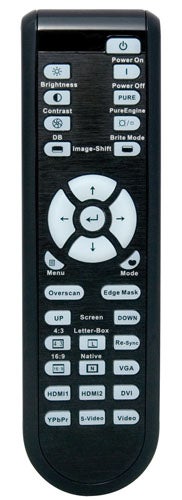
This is presumably because unlike most sharpening processes, the one in the HD82 works in tandem with the projector’s de-interlacing and motion compensation circuits, resulting in a system more able to differentiate genuine detail from picture noise than most rival engines. Purists will still likely not touch the feature with a bargepole, but I maintain that you should at least try it once. You never know, you might just be surprised…
For me the most uncertain element of the Pure Engine is the motion compensation circuitry. Using the Medium or High settings of PureMotion is basically a non-starter, in my opinion. For even if you’re just watching something relatively static you’ll frequently see really distracting processing artefacts like flickering over fast-moving image elements, shimmering halos around slow-moving elements, and even a repeated twitching effect, particularly when watching Blu-ray.
To be fair, the PureMotion certainly does what it says on the tin in terms of making motion look more fluid; things move around the screen with amazing, almost disturbing fluidity, except for when those occasional twitches I mentioned set in.
Thankfully, with the Low mode the amount of artefacts the processing generates drops off enormously, while you still get a marked reduction in judder. For me, though, the picture still didn’t look entirely natural, so I have to say that ground-breaking though the PureMotion system might be for DLP, I preferred to leave it permanently off. Especially as the projector’s ‘native’ handling of motion is very good anyway.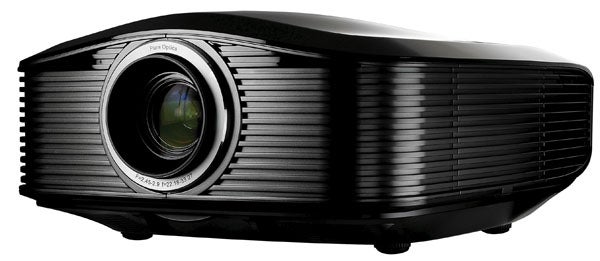
The only other potentially negative thing I can think of to say about the HD82’s pictures is that they’re not especially bright. The projector claims a 1,300 ANSI Lumens maximum output, but the reality in ‘real world’ conditions seems well down on that. All this really means is that you shouldn’t use the HD82 in anything other than a blacked out room – not a big issue given anyone who uses any home cinema projector in anything other than a totally blacked out room is going to be selling themselves and their projector seriously short.
Verdict
If you wanted to be really miserable, you could get your knickers in a twist about the fact that one of the HD82’s most high-profile features, its motion processing, doesn’t really deliver the goods. However, the core picture quality produced by the HD82, even without the motion processing in play, is so profoundly excellent that the projector is still worth every solitary penny of its £3,000 asking price…and then some.
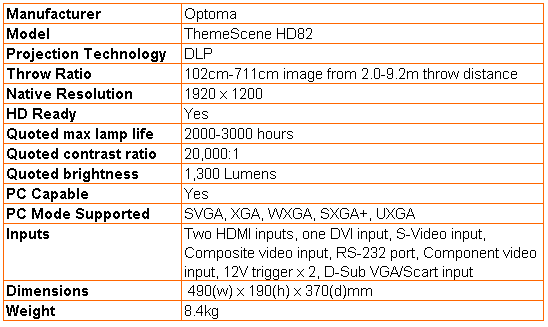
Trusted Score
Score in detail
-
Value 9
-
Features 9
-
Image Quality 9
-
Design 9

